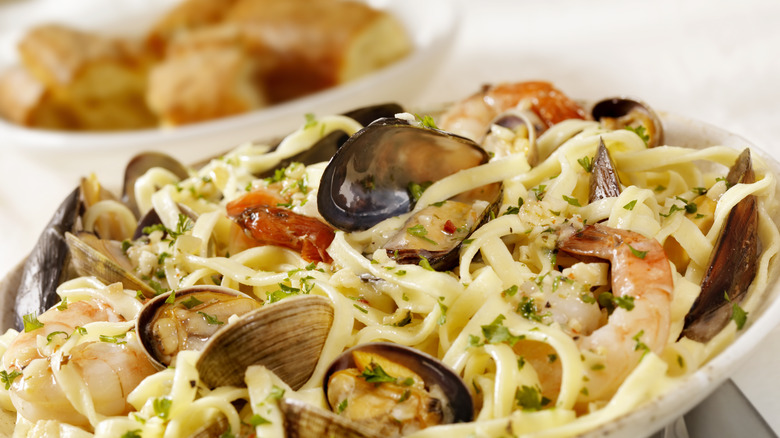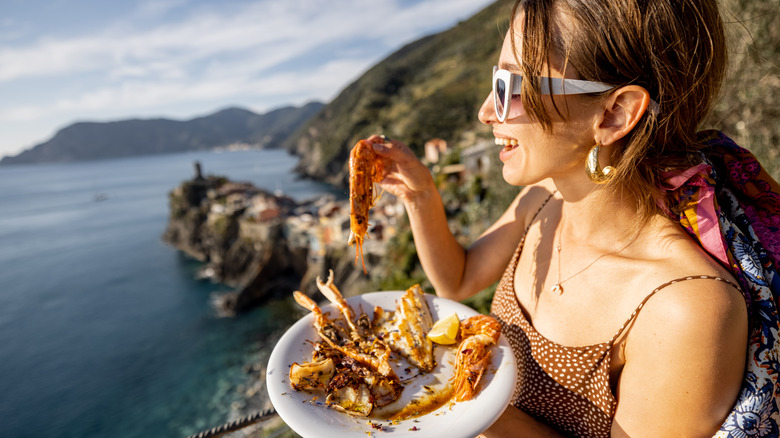The Italian Faux Pas Bobby Flay Breaks For Great Pasta
Italians are incredibly passionate about their cuisine, and for good reason — it's delicious. While ingredients and cooking methods can vary across the country, there are a handful of food rules that most Italians adamantly adhere to. These rules include, but are not limited to: drinking cappuccinos only before 11 a.m., eating meat and pasta as separate courses rather than pairing them in a single dish, and never, ever combining cheese with seafood.
With decades of experience as a professional chef and restaurateur, no one can argue that Bobby Flay doesn't know his way around the kitchen. However, we'd wager that there are at least a handful of Italians who take issue with the chef's well-documented history of pairing cheese and seafood together in pasta. Whether he's making silky and herbaceous shrimp orecchiette pasta topped with soft peaks of Parmigiano Reggiano, or cooking up a lobster mac and cheese, for Flay, seafood and cheese are meant to be together in pasta dishes — even if it's not traditional in Italian cooking.
Why some Italians disagree with the pairing
Italians are renowned for their culinary accomplishments, not because they produce overly complicated or elaborate food, but because the secret to success in Italian cooking lies in masterfully executing dishes that are perfect in their simplicity. Using a few high-quality ingredients, Italian food highlights local, in-season products, artfully showcasing their most delicious attributes.
With this in mind, there are two key reasons Italians may argue that seafood and cheese have no place in the same dish. First, local products: Italy's cheese-making regions like Parma, Piedmont, and Veneto are inland, and since seafood was only prevalent on the coast, traditional Italian recipes probably wouldn't have included both. As both ingredients are perishable, they likely wouldn't have been found in the same kitchens for many years.
The second reason might stem from the belief that the rich, creamy complexity of cheese fundamentally clashes with the often delicate flavors of seafood. Rather than enhancing these flavors, some believe that adding rich cheeses could mute or cover them up altogether.
How Italians prefer to flavor their seafood
Unlike in many parts of the world, where freshly grated Parmigiano Reggiano is welcomed atop seafood pasta — as well as salads, soups, and other dishes — home cooks and chefs in Italy tend to use cheese more sparingly. For the lightly sweet and often delicate flavors and textures of seafood, a squeeze of lemon, a splash of white wine, a hint of freshly cracked black pepper, or a subtle herbaceous note are the preferred pairings. These flavors provide a harmonious accompaniment to the star ingredient, elevating its flavor to the next level without overpowering or subduing it. These ingredients are also more likely to be found in the same region, resulting in a dish that better showcases the traditional flavors of a particular area.
Of course, there is no one right answer. Next time you're preparing seafood at home, consider omitting the cheese for a taste of what dining in Italy's most beautiful seaside restaurants is like. However, if you find yourself wishing you'd followed Bobby Flay's approach, it's never too late to pivot and add a bit of cheese on top.



